What is My Skin Type?

Ever wonder what skin type you have? There are five main skin types: normal, dry, oily, combination and sensitive. Understanding the different types of skin and which one you have will help give you a better idea of how to treat acne breakouts and achieve smooth, clear skin.
Your skin type is usually determined by genetics, but there are daily habits and environmental factors that can worsen a skin condition. Each skin type has a specific set of characteristics and symptoms, and requires special attention. Keep reading to find out about your personal skin type and how to best care for it.
Normal Skin Type
Those with a normal skin type don’t generally describe their skin as oily or dry. When oiliness and dryness are present, it’s rare and tends to be easy to get rid of or resolve. When it comes to pore size, normal skin types feature small pores that are not engorged or easily visible. Normal skin doesn’t normally have a great excess of shine, and it also doesn’t tend to be cracked or flaky. Normal skin types usually exhibit few fine lines and wrinkles, and the skin’s tone is generally even, with no marked blemishes.
Even if you have a normal skin type with few blemishes, incorporating our tips for how to keep skin clear and following a proper skincare routine can keep your skin looking vibrant and healthy for the future. Normal skin is not a synonym for perfect skin and even those who characterize their skin as normal deal with the occasional blemish or other skin issues. It’s important to remember that skin changes over time as well, meaning those that have no skin problems currently could potentially develop issues with age and life events, including pregnancy and menopause. If your hormone levels change for any reason, or you happen to use a product that your skin is sensitive to, you may experience a hormonal acne breakout.
Those with a normal skin type should use products that don’t make their skin feel overly greasy and avoid products that cause excessive dryness. While normal skin types require less maintenance than other skin types, it’s important to remain consistent with a regular skin care regimen like bioClarity’s 3-step routines that provide key ingredients to keep your skin looking and feeling its best.
Dry Skin Type
If you have dry skin, you may feel a tightness in your skin. There may also be scaly patches or flaking. Those with dry skin types generally have almost invisible pores, and may suffer from premature wrinkles and regular irritation to the skin.
What Causes Dry Skin?
The cause of dry skin can be attributed to a variety of factors. For some, dry skin is hereditary, as genetic predispositions can affect the amount of sebum produced in the skin’s oil glands. Sebum is responsible for keeping our skin soft and supple.
Many assume that dry skin is due to a lack of moisture, but the water content of dry skin is generally found in similar levels to that of oily skin. Adding water to dry skin is actually counterproductive to treating this skin condition.
The Importance of Moisturizer for Dry Skin
For a skincare routine for dry skin, finding a moisturizer that helps replenish hydration is essential. Those with dry skin often suffer from slight allergic reactions and tend to benefit from creams instead of lotions when it comes to moisturizers, as they contain more oil, making it thicker and more moisturizing. The more oil found in a moisturizer, the better it can absorb throughout the epidermis’ barriers to help hydrate the tissue. Before adding a daily moisturizer to your routine, test it on a small portion of your skin to ensure you don’t have an allergic reaction.
Brighten & Restore Your Glow!
A peel-off masque packed with lush botanicals, refreshing nutrients, and detoxifying clays for a smooth, glowy face.
Find Your GlowAvoid Harsh Cleansers
Those with dry skin are generally advised to avoid benzoyl peroxide treatments, which negatively affect sebum production. Our vegan skincare line contains no benzoyl peroxide and offers replenishing, moisturizing ingredients such as green tea extract to ensure your skin remains moisturized and supple.
Can Drinking Water Hydrate My Skin?
While drinking enough water is important for holistic health, the pervasive myth that increasing your water intake can improve your skin is actually a fallacy. Drinking more water doesn’t improve dry skin, but ensuring your body is as healthy as possible can, so it’s important to drink the recommended amount of water each day.
Lifestyle and Habit Changes
From showering too often to using humidifiers, there are simple changes you can make in your everyday life to ensure your dry skin gets the attention and care it needs.
Showering ConcernsAvoid taking long, extremely hot showers. Hot water can actually strip the oil from your skin and spending prolonged periods of time under the water can dry it out even further. Save water and your skin by limiting yourself to 5-minute showers and only using lukewarm to warm water.
A Case for HumidifiersWhile many think of humidifiers when it comes to improving congestion from allergies or illness, these devices can actually benefit your skin. If you live in dry conditions, whether year-round or seasonally, supplementing the moisture in the air can help your skin remain soft and supple. Be sure to replace the water in your humidifier every day so mold and bacteria don’t have the chance to grow.
When Dry Skin Is Something More
Sometimes dry skin is the indication of an underlying condition, so if you notice a great deal of redness, flaking, or irritation, it’s important to talk to a doctor or dermatologist to rule out any of the following skin conditions:
Seborrheic DermatitisThis skin condition is characterized by scaly, red rashes that may or may not be itchy. Breakouts of this condition can be found all over the body, but like acne, tend to be found on areas that are saturated with oil glands. You may find that your scalp and eyebrows show more dandruff, and there may be scaliness present on the sides of your nose.
Allergic Contact DermatitisSometimes dry skin is simply an allergic reaction to an outside substance, which could be something naturally occurring like poison ivy or may be caused by medications and other topical skin care applications.
Athlete’s FootIf you notice a great deal of dry skin on your foot, whether that be on the soles or in between your toes, it may be an indication of athlete’s foot. This condition is typical of athletes (hence the name) because of their propensity to sweat heavily while wearing constricting footwear. Usually, your foot will exhibit a scaly rash that may burn, itch, or sting. This type of skin fungus is very contagious, and can be spread through clothing, towels or contaminated floors, like the floor of a locker room. This can easily be treated with antifungal medication, but it is highly likely to recur if conditions remain the same.
EczemaEczema, also known as Atopic Dermatitis, is often hereditary and can last for years. It’s commonly observed on children, but adults can experience symptoms of this condition as well. This skin condition affects anywhere from 9 to 30 percent of the United States population, but those who live in dry climates tend to be more likely to develop it. For some, it disappears, while others struggle with this condition their entire lives.
Oily Skin Type
Those with oily skin tend to notice a great deal of shine on their face, and may deal with terrible acne breakouts.
What Causes Oily Skin?
You've probably asked yourself: Why do I have oily skin? Oily skin is the result of both genetic factors and hormonal changes experienced in an individual’s lifetime. Those with a genetic predisposition to active oil glands produce a higher amount of sebum, an oily substance created to help keep the skin soft and hydrated. This oil flows from inside the epidermis to the surface of the skin through pores and hair follicles. When the body experiences a fluctuation in hormone levels, it signals the production of androgens, a male hormone present in both men and women.
The production of androgens stimulates an increase in sebum production, but when an excess of this oil is produced, it can expand the size of the skin’s pores and result in blockages that become pimples and other acne blemishes. Oily skin is more prone to acne breakouts, blackheads, whiteheads, and pustules or papules. Your pores may be more visible because of their size expansion, and your skin may appear greasy throughout the day. If you wear makeup, you may find it slides off quite easily.
How to Care for Oily Skin
Many individuals struggling with oily skin head straight for products that promise to dry out the skin, like acne treatments containing harsh ingredients like benzoyl peroxide, but this can actually be counterproductive. Benzoyl peroxide and other drying ingredients may actually trigger your skin to work harder at producing more oil to compensate, resulting in oilier skin.
It’s important to lightly exfoliate oily skin, as the buildup of oil can cause dead skin cells to become trapped in the pores and lead to acne blemishes. While you may be tempted to reach for harsher products and rough loofas, it’s important to use products that contain gentle exfoliators, like the salicylic acid found in Treat, bioClarity’s acne treatment gel. Salicylic acid is a natural exfoliant that gently sloughs off dead skin cells that may result in pore blockages.
Oily Skin and Acne
Excess sebum production can cause acne, and those with oily skin often struggle with whiteheads, blackheads, and pimples. If you've been searching for effective acne-fighting ingredients, you likely encountered debates on salicylic acid vs. benzoyl peroxide. Many dermatologists recommend salicylic acid to those suffering from mild to moderate acne. It permeates into the pores and helps get rid of built-up sebum, dead skin cells, and debris that may lead to breakouts.
Recommended Product: BioClarity Clear Skin System
Clearer skin in as little as two weeks.
A simple 3-step regimen that rescues stressed skin instead of punishing it, banishing bumps, erasing redness.
Try SomeOily Skin and Aging
Those with oily skin are fortunate when it comes to signs of aging. Oily skin develops fewer wrinkles, meaning you seem to age more slowly. Oily skin types tend to have thicker skin thanks to genetic factors, and this thickness means less fine lines, as their skin is less prone to dehydration.
Habit and Lifestyle Changes
While those with oily skin cannot change their genetics, there are daily habits that may lead to the decrease of excess shine and sebum production. Reevaluating your diet may be beneficial as there is a proven correlation between certain foods and acne.
Your Makeup RoutineOily skin types should stay away from thick, heavy cosmetics that can lead to blocked pores. Use oil-free and non-comedogenic products crafted for oily skin types, and make sure you remove your makeup each night before going to bed, and before you head to the gym. Also, be sure to clean your makeup brushes regularly to avoid spreading bacteria across your skin’s surface.
Use MoisturizerThose with oily skin may assume they don’t need moisturizer, but leaving moisturizer out of your routine can actually make the skin even oilier. Using products or skipping product altogether to dry out your face can signal the oil glands underneath the skin to start producing and pumping out more sebum, resulting in oilier skin. Instead, find a moisturizer that’s lightweight and oil-free to keep your skin soft and properly hydrated.
Leave Your Face AloneThose with oily skin often struggle with breakouts and blemishes, but it’s important to resist picking or popping them. Doing so may worsen pimples, especially for acne-prone, oily skin. Your fingers can easily spread bacteria and make a small breakout turn into a large one, so it’s best to find a skin care treatment that will battle blemishes safely and effectively.
Combination Skin
Combination skin features two or more different skin types on the face. Combination skin types typically experience dry and flaky skin on certain portions of the face, and excessive oil on others. Many mistakenly believe they have oily skin when they, in fact, have combination skin type. Unless an individual’s skin is oily all over, there are likely portions of skin that are dry or normal, which would qualify under combination skin.
Combination skin is the most common skin type, but it can be hard to identify and treat. The skin will often be shiny in the T-zone, which includes the forehead, nose, and chin. These areas tend to have more active oil glands than other parts of the face like the cheeks. Dealing with both dry and oily areas means finding the perfect skin care routine for combination skin that’s strong enough to exfoliate without irritating the skin.
Stick to Natural Ingredients
Those with combination skin often find that harsh, chemically-based treatments, like those that contain benzoyl peroxide, can actually dry out the dry areas of their face even further and trigger more sebum production in oily areas. Opt for products containing plant extracts such as green tea, cucumber, and chamomile to soothe the skin and calm inflammation.
Avoid Products with Fragrance
Those with combination skin tend to have cheeks that are flaky and dry. These dry areas are likely to be irritated by certain ingredients, especially chemically-created fragrances. Stick to products with natural ingredients, like bioClarity’s line of fragrance-free, vegan skincare products designed to soothe and protect the skin.
Use Two Different Moisturizers
It’s important to use moisturizer, but with combination skin, it can be hard to find the right balance between a cream that treats the dryness found on the cheeks and the oily areas found on the T-zone. In these cases, it’s a good idea to use two different moisturizers in your skin care regimen. Use a heavier moisturizer on your cheek area, or any skin that’s excessively dry, and use a lighter moisturizer on the oily parts of your face.
Be Sure to Exfoliate
Exfoliating is essential for those with combination skin. Dead skin cells on the dry part of the face will be sloughed off, while clogged pores will be unblocked and cleared. BioClarity skincare products contain the highest allowable concentration of salicylic acid, a natural exfoliator that can help unclog pores and slough off dead skin cells that can lead to dull-looking skin.
Sensitive Skin
Sensitive skin types may exhibit the characteristics of dry skin, oily skin, or combination skin, but they also deal with a great amount of redness and irritation. Normal skin types may also have sensitive skin, but these generally don’t overlap. Sensitive skin types can be caused by skin conditions like rosacea or allergies, so it’s best to avoid harsh chemical-based skincare treatments. This skin type is also easily inflamed, so it’s important to choose the right natural skin care for sensitive skin to avoid any adverse reactions.
There are a variety of ways to classify skin beyond these main types. Dermatologists use a variety of different scales and classification systems, and when it comes to skin care and treatment, two schemas you’ll often come across include the Fitzpatrick Scale and a grading system that looks at the severity of acne.
The Fitzpatrick Scale
You may sometimes hear the skin classified by a schema known as the Fitzpatrick Scale. The Fitzpatrick Scale, also known as the Fitzpatrick Skin Typing Test and Fitzpatrick Phototyping Scale, was developed back in 1975 by Thomas B. Fitzpatrick. Originally this schema was based on eye color and skin color, but when this proved to be unreliable, the system was switched to a basis of patient’s reactions to sun exposure, with a look at genetics as well. It turns out sun exposure and acne are correlated, and learning what type of skin you have can help you avoid burns and breakouts. This system is still commonly used to research the causes and effects of human skin pigmentation in a variety of dermatological conditions. A dermatologist may use this classification system to determine how a patient may react to certain facial treatments.
This system focuses on the skin’s potential for burns, irritation, and hyperpigmentation, which can be a great indicator about the ways certain topical applications and invasive treatments may affect the skin. There are seven main types on this classification scale.
- Type I: People who score between 0 and 6 on the van Luschan scale have skin that nearly always burns when in the sun, and never tans, usually exhibiting pale white skin. Generally, these individuals have blond or red hair, blue eyes, and freckles.
- Type II: People considered Type II on this schema score between 7 and 13 on the van Luschan scale, and usually burn when in the sun. They may tan, but at a minimal level, meaning most in this skin type have white or fair skin. These individuals tend to have blond or red hair, and blue, hazel, or green eyes.
- Type III: This classification sees scores between 14 and 20 on the van Luschan scale may get the occasional mild burn, tan uniformly, and usually have cream white skin. This classification can have any eye color.
- Type IV: Those with this skin type score between 21 and 27 on the van Luschan scale, very rarely get sunburns, and tan easily, leaving them with moderately brown skin.
- Type V: It’s extremely rare for individuals with this skin type—scoring between 28 and 34—to get sunburned, and they tan very easily. They usually have dark brown skin.
- Type VI: The final classification is reserved for scores between 35 and 36. These individuals have deeply pigmented dark brown skin and never get sunburns.
Acne Grading System
If you have acne, your dermatologist will also give you a grade of severity to help determine the right treatment. There are four main grades of acne, ranging from mild to severe. For a thorough rundown of the acne severity grading system, read our comprehensive guide on types of acne.
Clogged or Congested Pores?
A complexion perfecting superfood masque that instantly tautens and tightens skin without over-drying, while making pores petite.
Get RefreshedKey Takeaways
- There are five main skin types: normal, dry, oily, combination, and sensitive.- Determining your skin type is essential for crafting the ideal treatment regimen.
- The Fitzpatrick Scale is used to determine certain skin types’ sensitivity to the sun.
- Acne is diagnosed on a basis of severity grades.
- Those with an oily skin type tend to also struggle with frequent acne breakouts.

Abby Vinas
Abby Vinas has long been an active member of the holistic health community, advocating in favor of its benefits to both our physical and emotional well-being. Her commitment to leading a healthy lifestyle has made her an authority on self-care practices. Abby is passionate about fitness, nutrition, and proper skincare, and is also an avid lover of avocado toast and dog-petting.
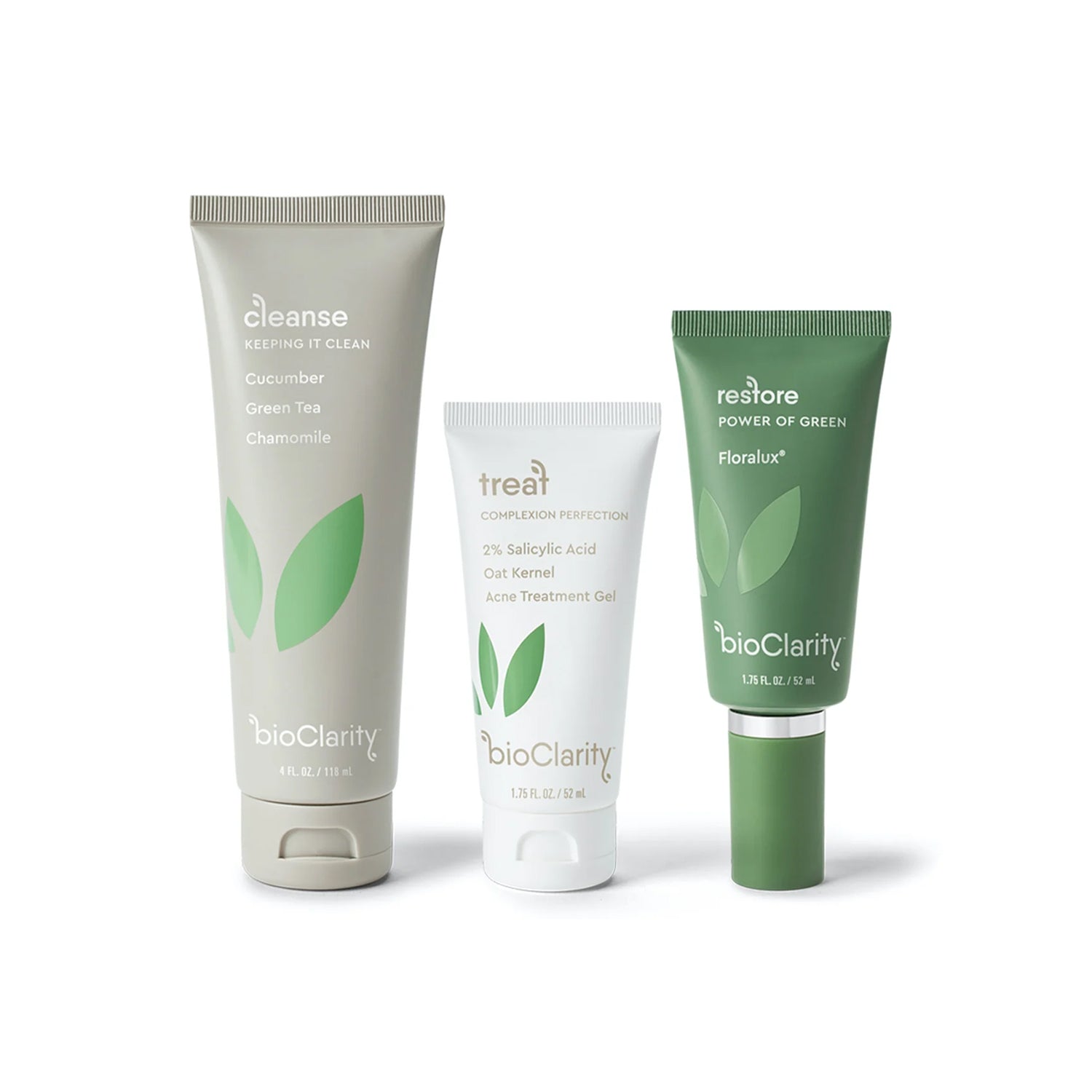
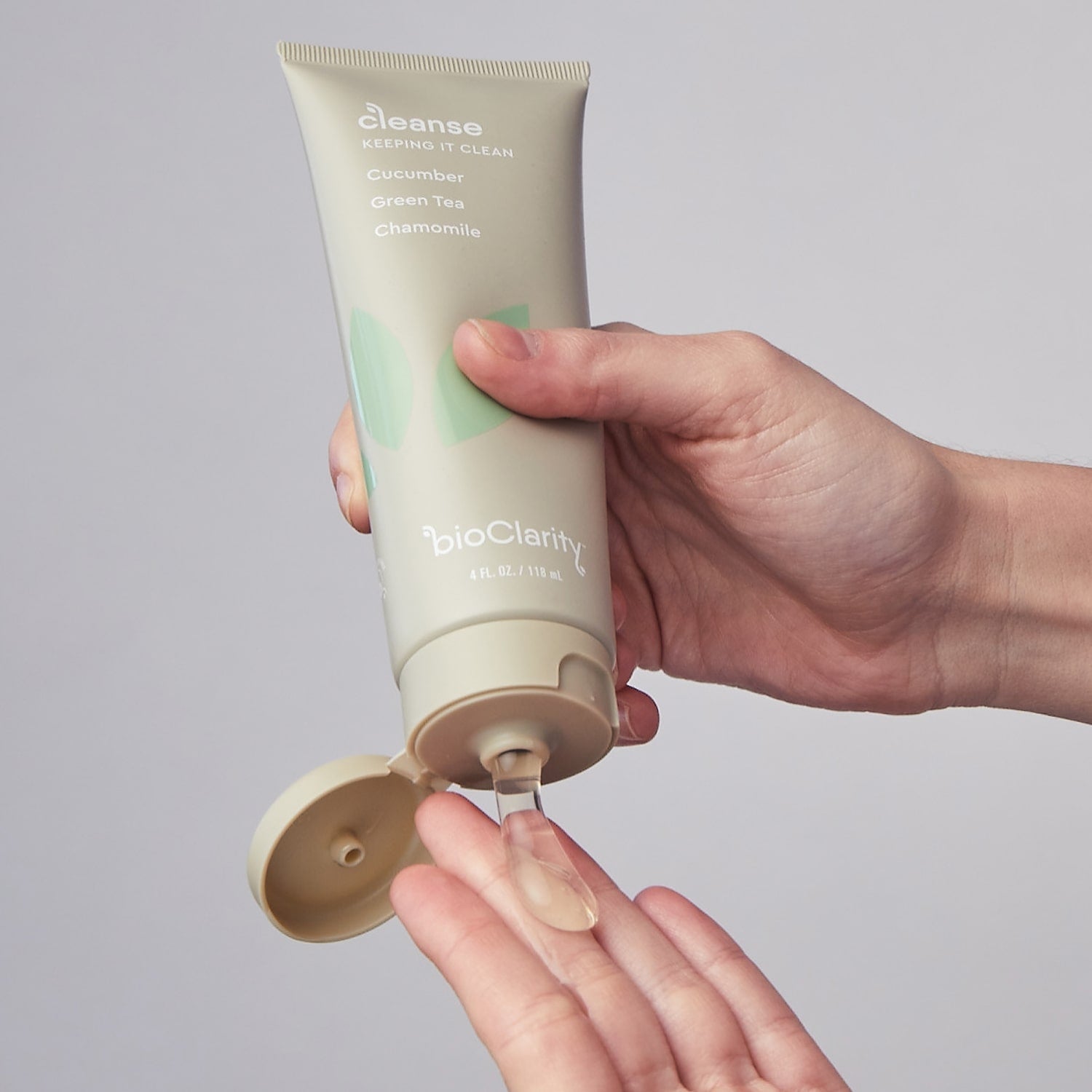
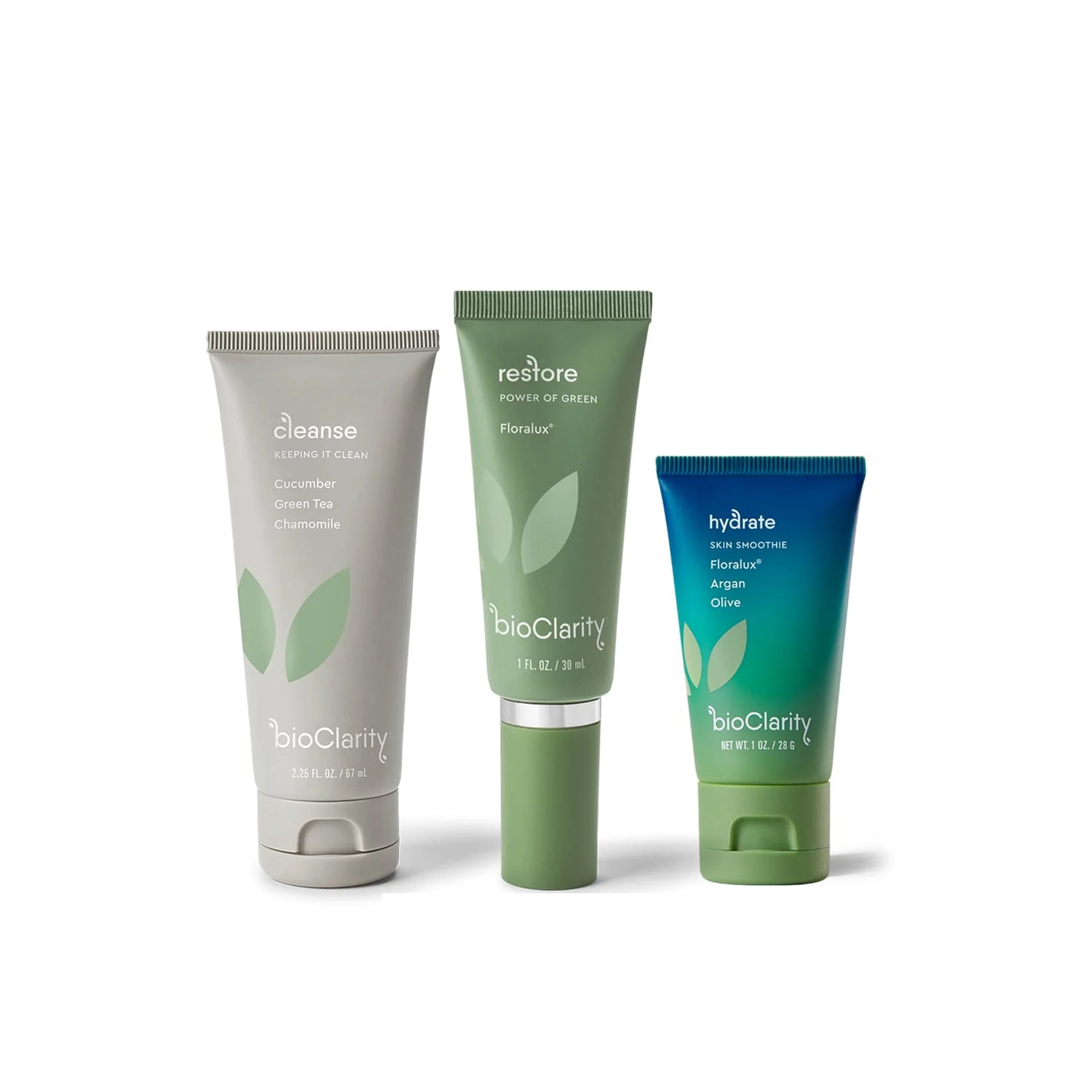
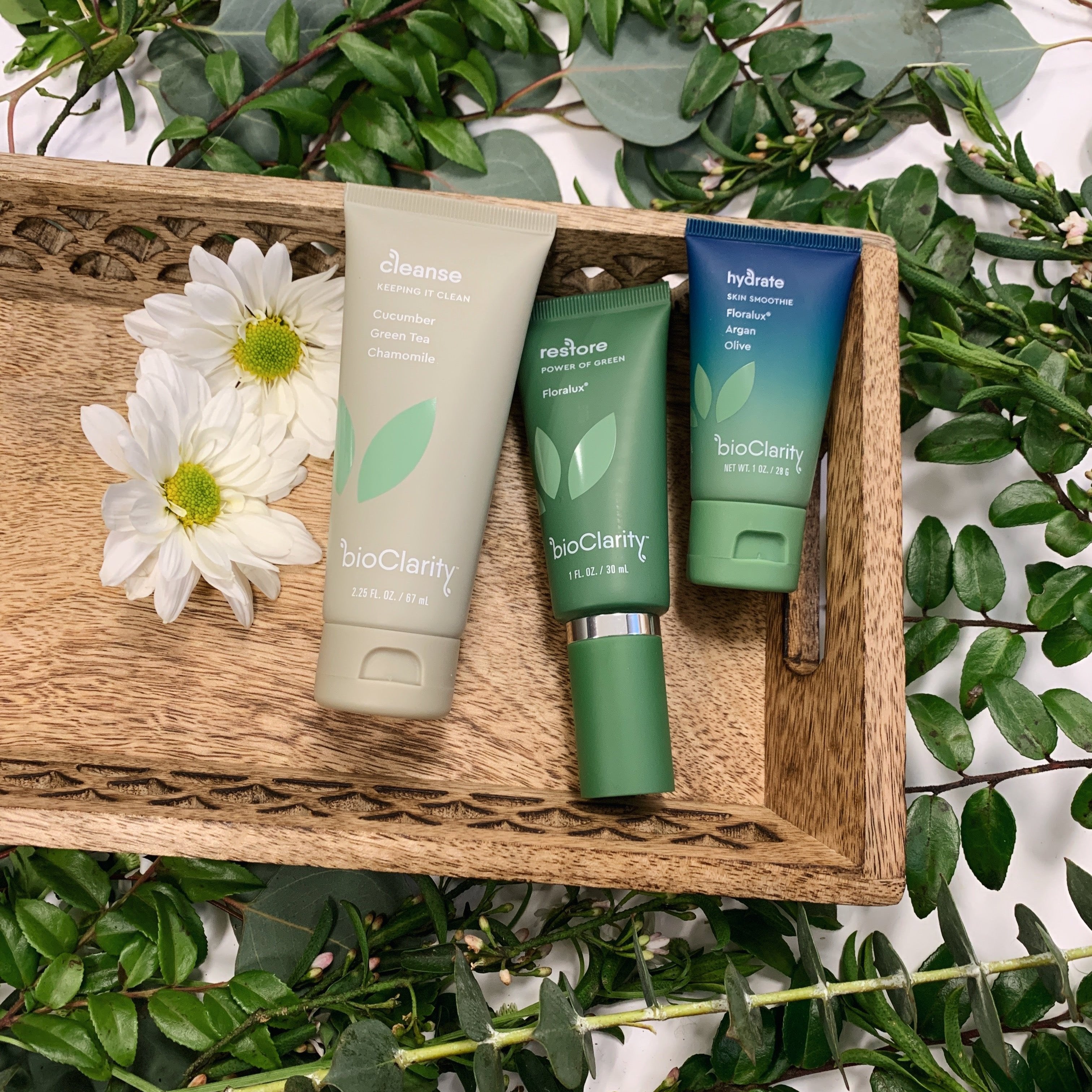
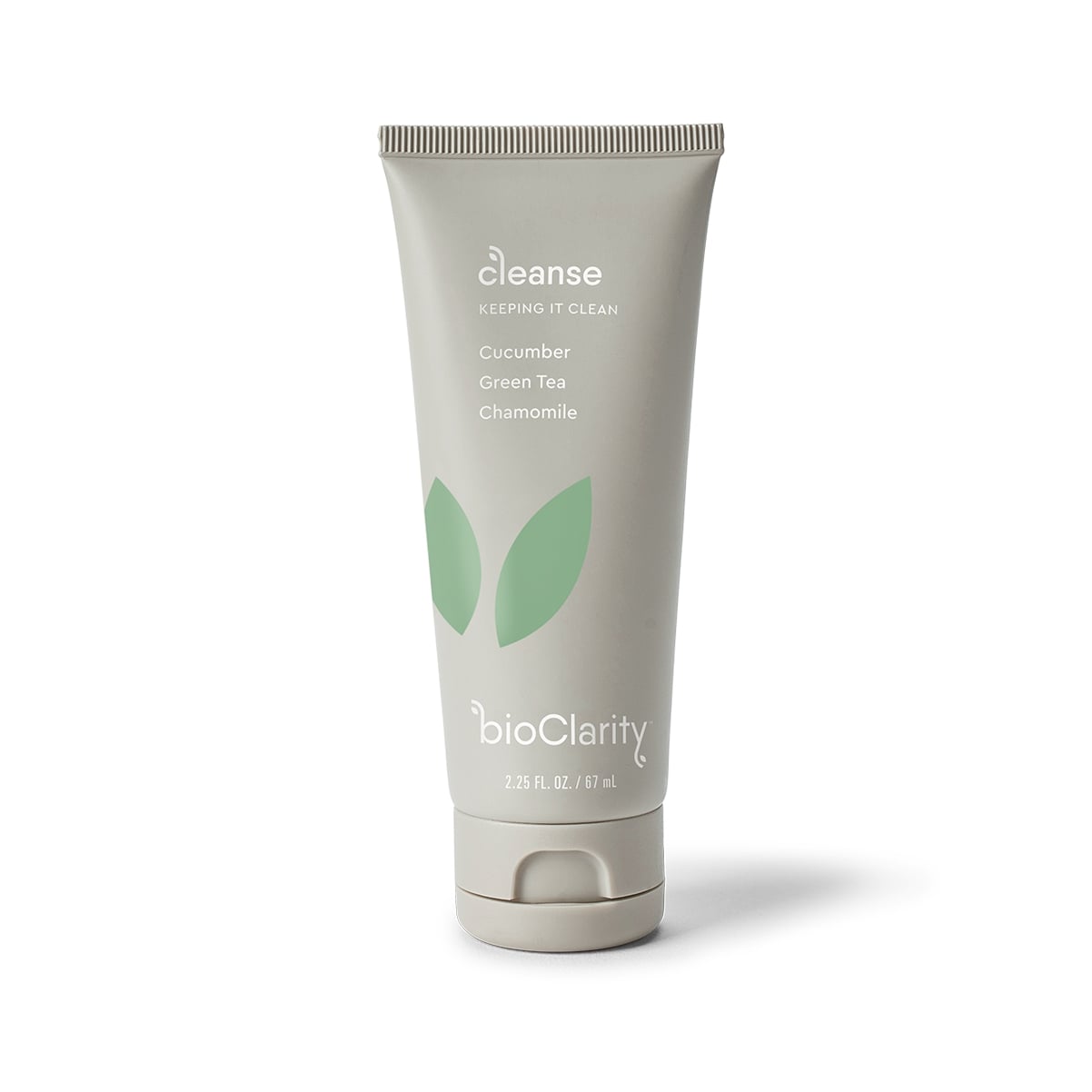
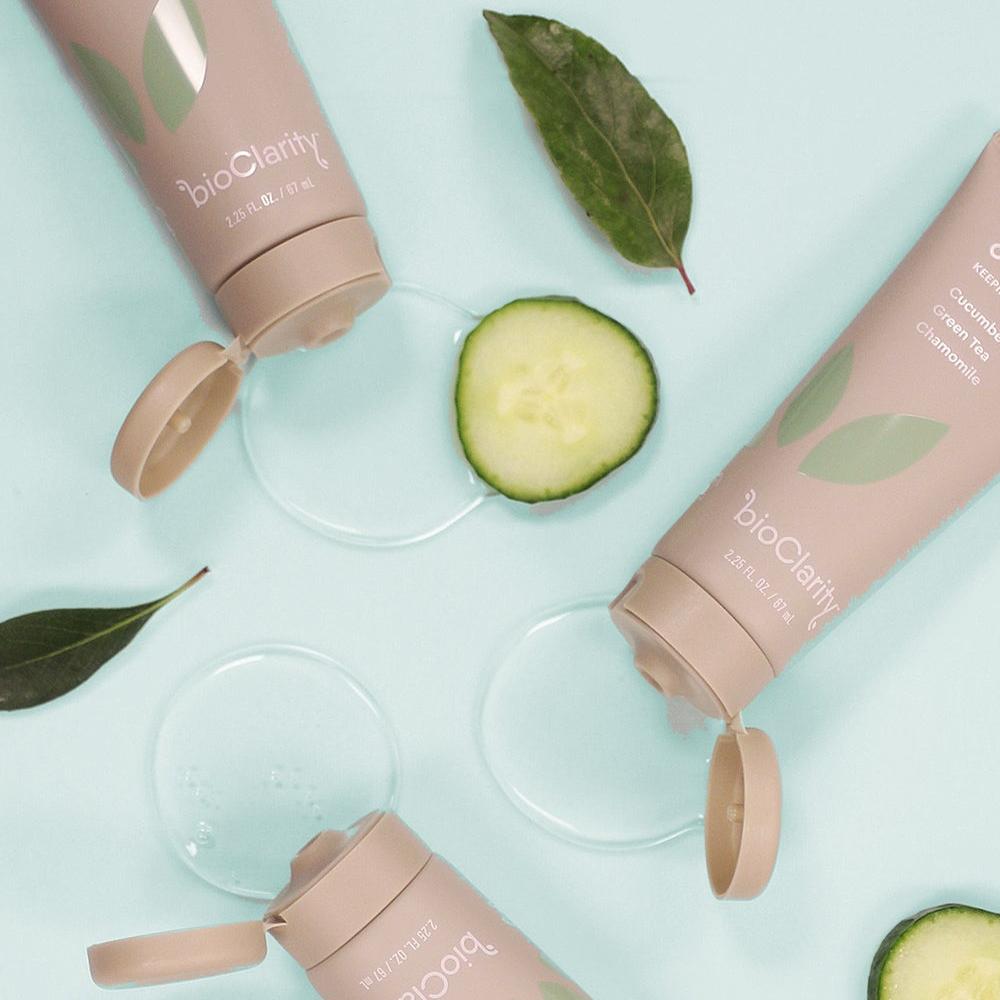



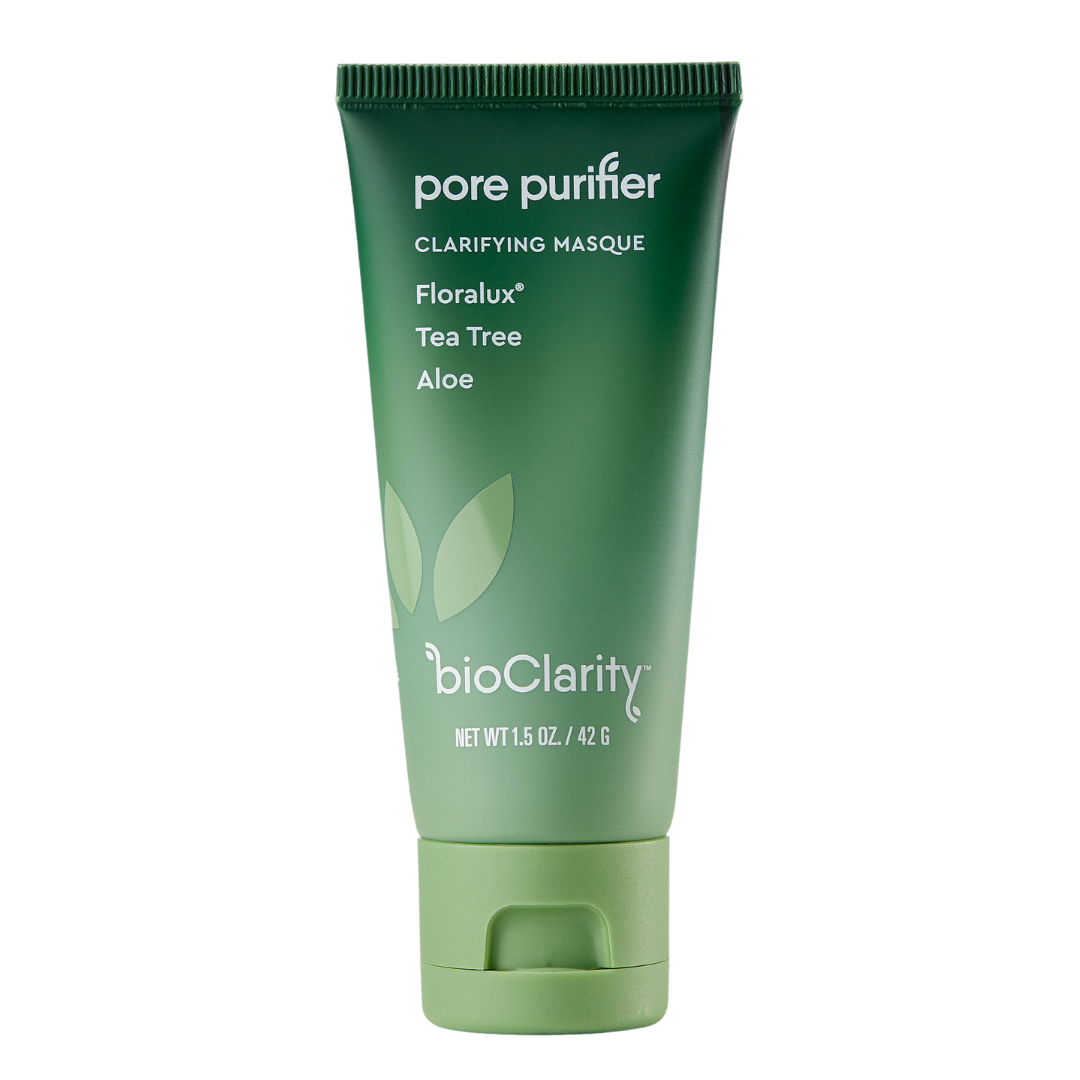
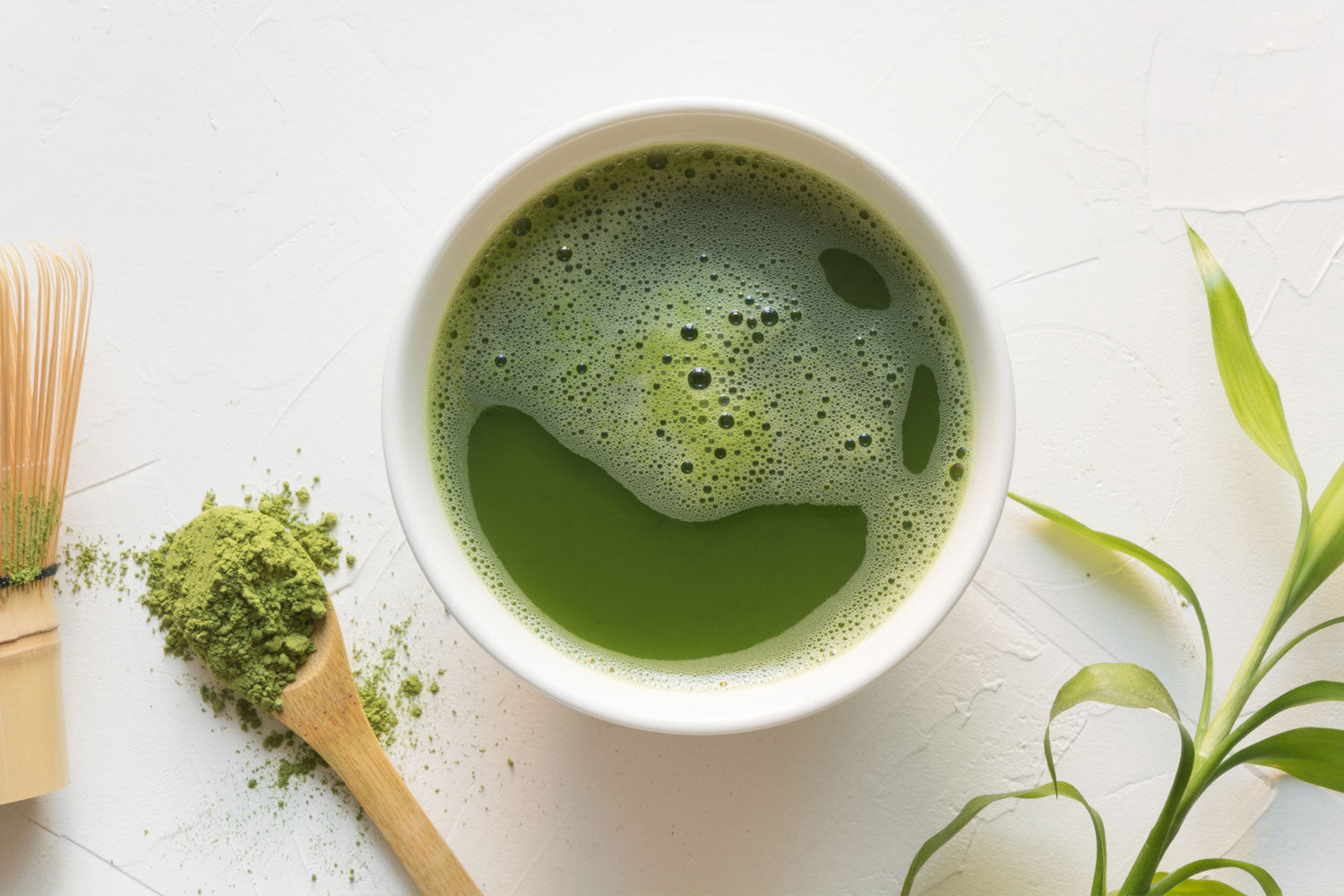
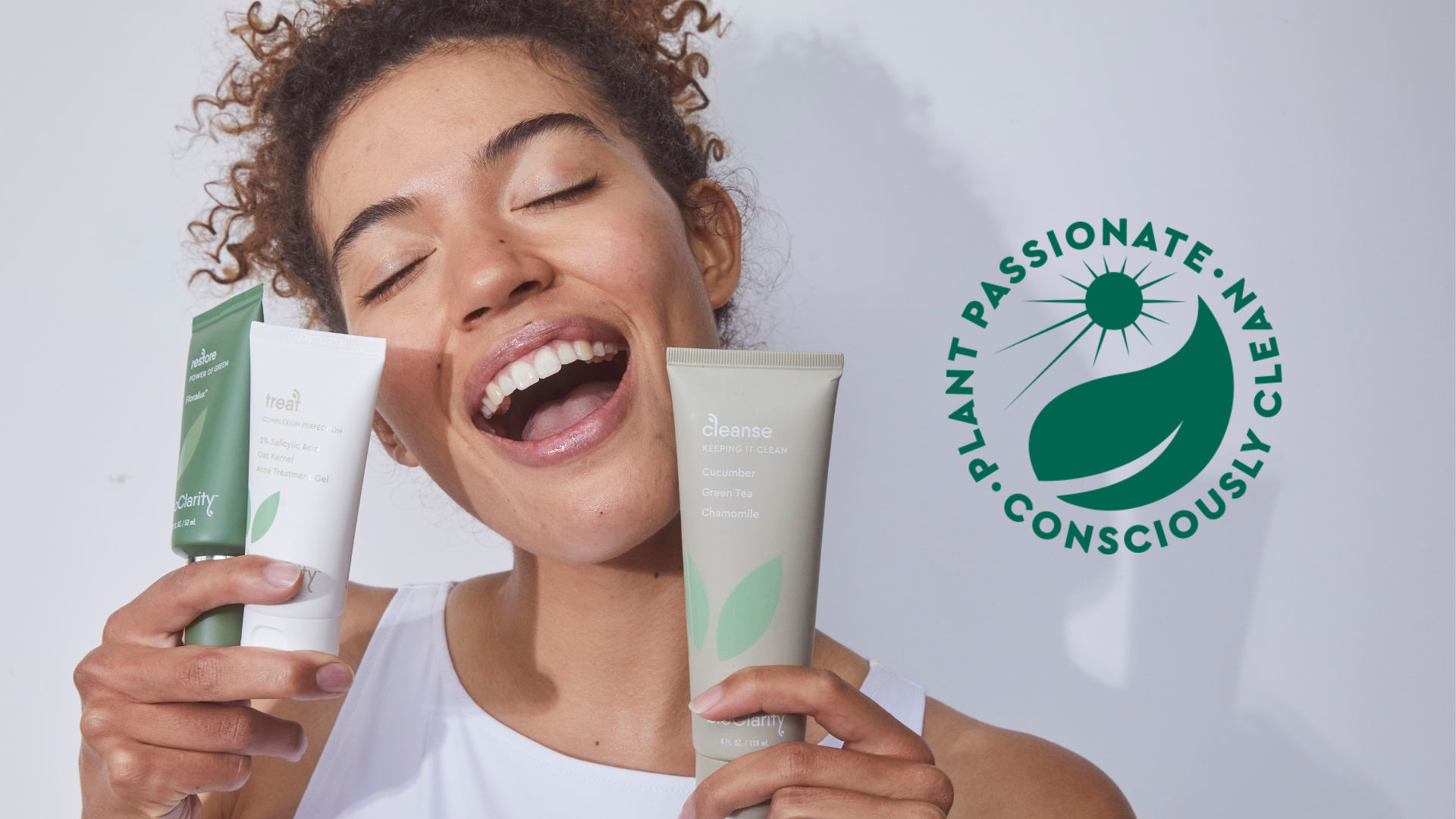

Comments
Mercy MD —
Great article with in-depth breakdown of skin types, risks, factors and links to remedies. Thank you BioClarity for the info and for creating such great natural products!
Chikaodinaka —
I want know my skin type and treatment